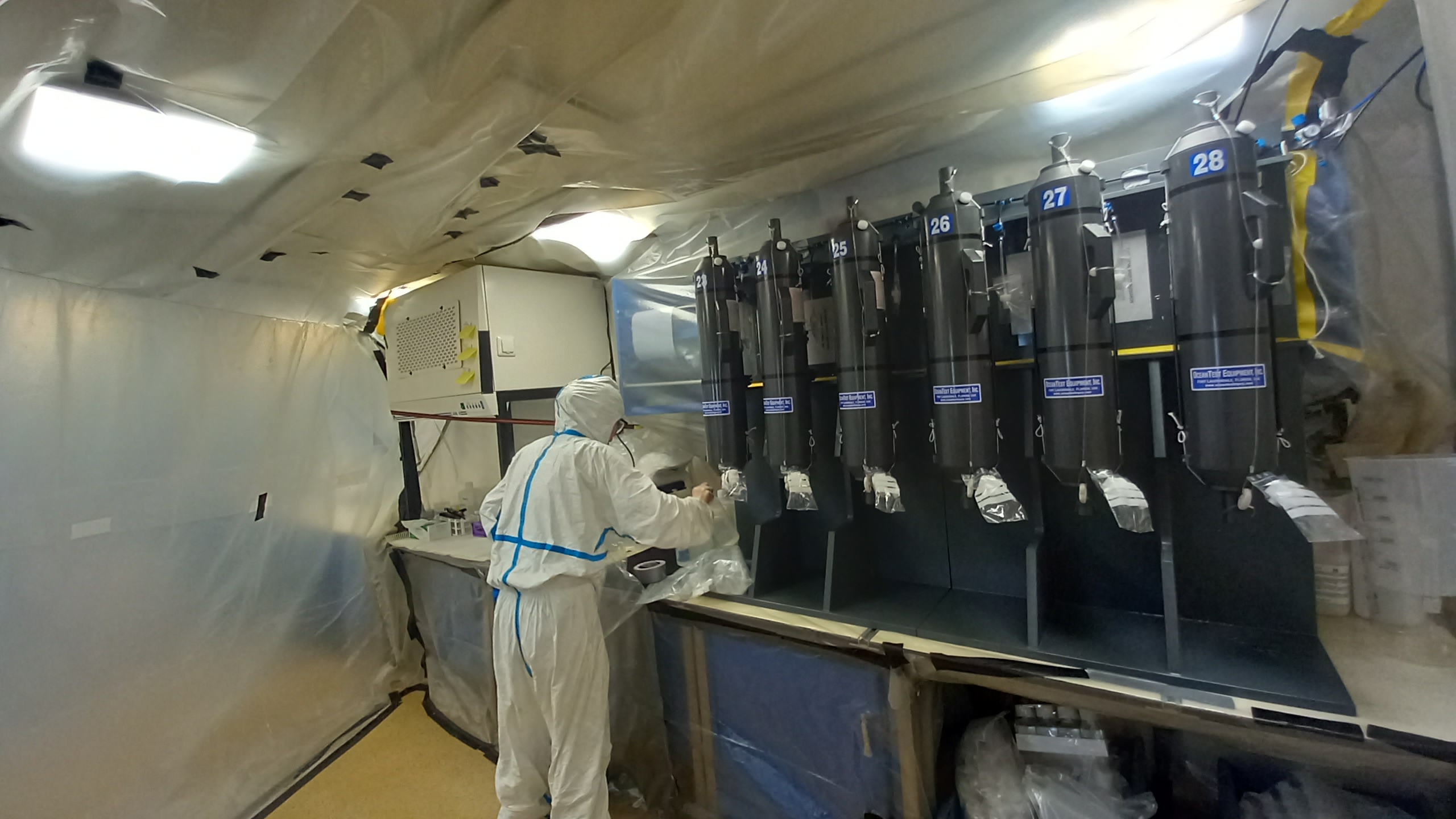When you think of bubbles, you might think of the bath or a bubble tea, but at sea we’re talking about a very different bubble; a “bubble” for trace metals
On our first day on board, still in port, we began building our bubble. The bubble is designed for ultra clean trace metal filtration and acidification. It’s made of plastic. The aim is to avoid any contamination from rust or dirt in the air, which is extremely hard on a metal vessel! It’s impossible to filter seawater and freshwater in the open air of the laboratory without introducing some contamination from dust, people and the ship itself.
So we covered the room’s ceiling, walls and any metal parts with plastic and tape. We cleaned the inside of the bubble. It took a whole day to create a nice, clean 10 m2 bubble. A lot of space, what a luxury! There are often 3 of us working in the bubble with a team onboard working hard to take water out of the ocean, sample it, and measure the concentration of trace elements at sea without contaminating anything.
The bubble has 2 entrances with airlocks. A clean flow of air thanks to a laminar flow hood and a high efficiency particulate air (HEPA) filter keeps the bubble free from dust and fine particles. With a constant flow of air from the HEPA filter, ‘dirty’ air from the outside cannot enter the bubble. That’s why higher pressure inside is essential!
I’ve worked in a clean lab on land, but I’ve never created a clean bubble before! I’m really pleased to see how to create a clean space, and we’ve developed some skills at taping everything up and becoming paranoid about finding the slightest hole or bit of metal in our work space. One small rusty spring would be enough to contaminate all of our water and ruin a few people’s science projects!
Capucine Camin
